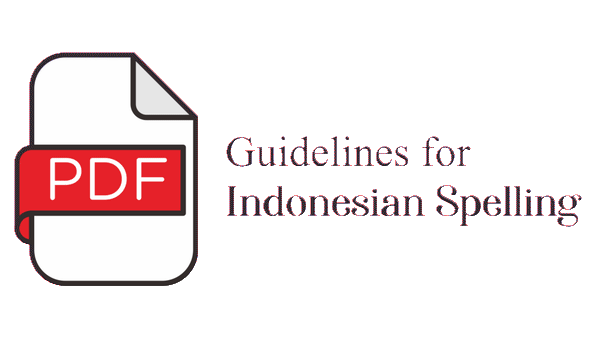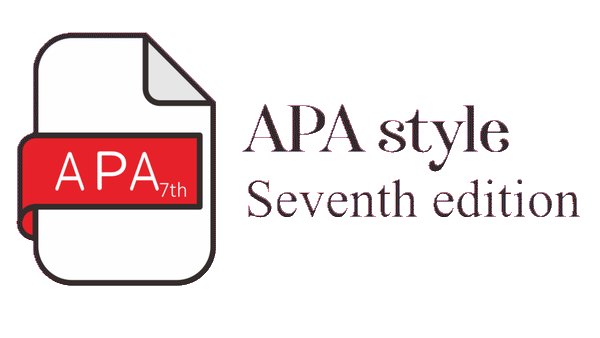Estimasi Nilai Ekonomi Pelestarian Kawasan Pesisir di Kabupaten Gunungkidul Menggunakan Contingent Valuation Method
Abstract
Pembangunan kawasan pesisir di Kabupaten Gunungkidul cukup pesat dan hanya berorientasi pada kepentingan ekonomi jika dibandingkan dengan biaya pelestarian ekosistem. Pelestarian kawasan pesisir membutuhkan partisipasi baik dari masyarakat maupun seluruh pemangku kepentingan (stakeholders) terkait. Tujuan penelitian adalah menganalisis karakteristik ekonomi pemanfaatan kawasan pesisir, menganalisis faktor penentu kesediaan membayar pengunjung dan masyarakat lokal, dan menganalisis nilai ekonomi pelestarian kawasan pesisir. Penelitian dilakukan di Pantai Baron, Drini, Gesing, Ngandong, Ngrenehan, dan Siung di Kabupaten Gunungkidul. Penelitian ini dilakukan pada bulan April—Agustus 2018. Metode pengambilan responden pada penelitian ini menggunakan teknik non-probability sample dengan teknik accidental sampling. Objek penelitian adalah masyarakat pesisir dan pengunjung pantai. Metode analisis yang digunakan adalah valuasi ekonomi dengan metode penilaian kontingen dan analisis deskriptif. Hasil penelitian menunjukkan bahwa (1) karakteristik ekonomi existing pemanfaatan kawasan pesisir yang mendominasi kawasan pesisir terdiri atas perikanan skala kecil dan pariwisata, (2) kesediaan membayar untuk pengelolaan kawasan pesisir lestari dipengaruhi oleh tingkat pendidikan, umur, jenis kelamin, pekerjaan, frekuensi kunjungan, dan status perkawinan, sedangkan faktor pendapatan merupakan faktor yang kurang berarti dalam pengelolaan kawasan pesisir; dan (3) nilai rata-rata willingness to pay pengelolaan kawasan pesisir Kabupaten Gunungkidul adalah Rp9.773,00 per orang per tahun, sedangkan nilai ekonomi pelestarian kawasan pesisir sebesar Rp8,3 miliar per tahun. Strategi pengelolaan kawasan pesisir lestari dilakukan dengan penetapan zonasi pemanfaatan, perbaikan infrastuktur, peningkatan sinergisitas antar-stakeholders, dan peningkatan edukasi kepada masyarakat.
Title: Estimating Economic Preservation Values of The Coastal Area in Gunungkidul Regency Using a Contingent Valuation Method
The development of coastal areas in Gunungkidul Regency is quite rapid and is only oriented towards economic interests compared to the cost of preserving ecosystems. Preservation of the coastal regions require participation of the community and all relevant stakeholders. The aims of the study are to analyze the economic characteristics of the use of coastal areas, analyze the determinants of the willingness to pay of visitors and local communities, and the economic value of coastal areas. The research was conducted at Baron, Drini, Gesing, Ngandong, Ngrenehan, and Siung Beach, Gunungkidul Regency. Research time from April to August 2018. The method of taking respondents in this study used a non-probability sample technique with an accidental sampling technique. The object of research is the coastal community and beach visitors. The analytical method is the economic valuation with contingent valuation and descriptive analysis. Results of the study show that the existing economic characteristics of the use of coastal areas that dominate consist of small-scale fisheries and tourism, also willingness to pay for sustainable coastal area management is influenced by education level, age, gender, occupation, frequency of visits, and marital status. At the same time, income is a less significant factor in coastal area management. The average value of willingness to pay for coastal area management in Gunungkidul Regency is IDR9.773,00 per person per year, while the economic value of the coastal area is IDR8.3 billion per year. Strategy of sustainability coastal area management is carried out by determining utilization zoning, improving infrastructure, increasing collaboration between stakeholders, and increasing public education.
Keywords
Full Text:
PDFReferences
Amirnejad, H., S. Khalilian, M.H. Assareh, & M. Ahrnadian. (2006). Estimating the existence value of north forests of Iran by using a contingent valuation method. Ecological Economics, 58(4), 665–675.
Badan Pusat Statistik. (2016). Provinsi D.I. Yogyakarta dalam angka. BPS D.I. Yogyakarta.
Barnes-Mauthe, M. (2013). The total economic value of small-scale fisheries with a characterization of post-l&ing trends: An application in Madagascar with global relevance. Fisheries Research, 147, 175–185.
Bertrand, L.H., Silva, J.A., & Gelcich, S. (2020). Challenges and opportunities of implementing the marine and coastal areas for indigenous peoples policy in Chile. Ocean and Coastal Management, 193, 1–9. https://doi.org/10.1016/j.ocecoaman.2020.105233
Bobinac, A. (2018). Mitigating hypothetical bias in willingness to pay studies: Postestimation uncertainty and anchoring on irrelevant information, Eur. J. Health Econ, 20, 1–8.
Brown, G., & C.M. Raymond. (2013). Methods for identifying land use conflict potential using participatory mapping. Landscape and Urban Planning, 2455, 13–26.
Choi, H & Koo, Y. (2018). Using contingent valuation and numerical methods to determine optimal locations for environmental facilities: Public arboretums in South Korea, Ecol. Econ, 149,184–201.
Choi, E.C., & Lee, J.S. (2018). The willingness to pay for removing the microplastics in the ocean–The case of Seoul metropolitan area, South Korea, Mar. Pol, 9, 93–100.
Ciriacy & Wantrup, S.V. (1947). Capital returns from soil-conservation practices, Journal Farm Economics, 29, 1181–1196.
Davis, R. (1963). Recreation planning as an
economic problem. Natural Resources Journal, 3(2), 239–249.
de Groot, R. S., M. A. Wilson, & R.M.J Boumans. (2002). A typology for the classification, description & valuation of ecosystem
functions, goods and services. Ecological economics, 41(3), 393–408.
Dinas Kebudayaan dan Pariwisata Kabupaten Gunungkidul. (2017). Statistik Kepariwisataan Kabupaten Gunungkidul 2016. Dinas Pariwisata Kabupaten Gunungkidul. Wonosari.
Djosetro, M., & Behagel, J.H. (2020). Building local support for a coastal protected area: Collaborative governance in the Bigi Pan Multiple Use Management Area of Suriname. Marine Policy, 112(103746), 1–10. https://doi.org/10.1016/j.marpol.2019.103746.
Effendi, A., S. Bakri, dan Rusita. (2015). Nilai ekonomi jasa wisata Pulau Tangkil Provinsi Lampung dengan pendekatan metode biaya perjalanan. Jurnal Sylva Lestari, 3(3), 71—84.
Erostate, M., Ghiotti, S., Huneau, F., Jouffroy, D., Garel, E., Garrido, M., & Pasqualini, V. (2022). The challenge of assessing the proper functioning conditions of coastal lagoons to improve their future management. Science of the Total Environment 803(150052), 1–10. https://doi.org/10.1016/j.scitotenv.2021.150052
Fauzi A. (2004). Ekonomi Sumber Daya Alam dan Lingkungan, Teori, dan Aplikasi. Gramedia, Jakarta.
Food & Agriculture Organization. (2012). Fishing People. FAO Fisheries and Aquaculture Department, FAO, Rome.
Gaib, A.U., I. Mahyudin, dan E. S. Mahreda. (2017). Valuasi ekonomi pariwisata bahari di pesisir pantai Desa Angsana, Kecamatan Angsana, Kabupaten Tanah Bumbu, Provinsi Kalimantan Selatan. EnviroScienteae, 13(1), 33–39.
Gao, L., Bao., W., & Shi, L. (2022). Governance mechanism and performance of marine eco-economic system: Evidence from China. Ecological Indicators, 136(108668), 1–14.
https://doi.org/10.1016/j.ecolind.2022.108668
Graham, H., de Bell, S., Hanley, N., Jarvis, S., & White, P.C.L., (2019). Willingness to pay for policies to reduce future deaths from climate change: Evidence from a British survey. Public Health 174, 110–117. https://doi.org/10.1016/j.puhe.2019.06.001
Hanley, N., S. Hynes, D. Patterson, & N. Jobstvogt. (2015). Economic Valuation of Marine & Coastal Ecosystems: Is it currently fit for purpose?. Journal of Ocean and Coastal Economics, 2(1), 1–24.
Halkos, G., & S. Matsiori. (2012). Determinants of willingness to pay for coastal zone quality improvement. The Journal of Socio-Economics, 41(4), 391—399.
Halkos, G., Matsiori, S., & Dritsas, S. (2019). Stakeholder engagement for sustainable development and their suggestions for environmental policy: The case of Mediterranean monk seal. Sustain. Dev., 27, 461—473, https://doi.org/10.1002/sd.1920
Halkos, G., Leonti, A., & Sardianou, E. (2020). Assessing the preservation of parks and natural protected areas: A review of contingent valuation studies. Sustainability, 12, 4784, https://doi.org/10.3390/su12114784
Halkos, G., Leonti, A., Petropoulos, C., & Sardianou, E. (2022). Determinants of willingness to pay for urban parks: An empirical analysis in Greece. Land Use Policy, 119.
https://doi.org/10.1016/j.landusepol.2022.106186.
Kementerian Kelautan dan Perikanan. (2016). Kelautan dan Perikanan dalam Angka 2016. DJPT Kementerian Kelautan dan Perikanan. Jakarta.
Lee, M.K., & S.H. Yoo. (2016). Publi’'s willingness to pay for a marina port in Korea: A contingent valuation study. Ocean & Coastal Management, 119, 119—127.
Lopes, P.F.M., S. Pacheco, M. Clauzet, R.A.M. Silvano, & A. Begossi. (2015). Fisheries, tourism, and marine protected areas: Conflicting
or synergistic interactions?. Ecosystem Services, 16, 333—340.
Maulana, H., S. Anggoro, dan B. Yulianto. (2016). Kajian kondisi dan nilai ekonomi manfaat ekosistem terumbu karang di Pantai Wediombo, Kabupaten Gunungkidul, Daerah Istimewa Yogyakarta. Jurnal Ilmu Lingkungan, 14(2), 82—87.
Mehvar, S., T. Filatova, A. Dastgheib, E. de Ruyter van Steveninck, & R. Ranasinghe. (2018). Quantifying economic value of coastal ecosystem services: A review. Journal of Marine Science and Engineering, 6(5), 1—18.
Mitchell, R.C., & R.T Carson. (1989). Using surveys to value public goods: The contingent valuation method. Resources for the Future. Washington DC.
Morrissey, K. (2020). Resource and environmental economics. International Encyclopedia of Human Geography (Second Edition), 463—466. https://doi.org/10.1016/B978-0-08-102295-5.10755-3
Mujio, L. Adrianto, K. Soewardi, & Y. Wardiatno. (2016). Analisis potensi konflik pemanfaatan ruangkawasan pesisir: Integrasi rencana tata ruang darat dan perairan pesisir. Sodality. Jurnal Sosiologi Pedesaan. 4(2), 139—144.
Nurzaman, A., Shaw, R., & Roychansyah, M.S. (2020). Measuring community resilience against coastal hazards: Case study in Baron Beach, Gunungkidul Regency. Progress in Disaster Science, 5, 1—12. http://dx.doi.org/10.1016/j.pdisas.2020.100067.
Östberg, K., L. Hasselström, & C. Håkansson. (2012). Non-market valuation of the coastal environment–Uniting political aims, ecological and economic knowledge. Journal of Environmental Management, 110, 166—178.
Pieter, J., F. Benu, & M. R. Kaho. (2015). Valuasi ekonomi ekowisata terhadap pengembangan objek wisata kawasan pesisir pantai (Studi kasus jasa lingkungan non-market sumberdaya alam objek wisata pesisir Pantai Lasiana, Kecamatan Kelapa Lima, Kota Kupang, Provinsi NTT). Jurnal Ilmu Lingkungan, 13(1), 55—64.
Pomeroy, R. & N. Andrew. (2011). Small-Scale Fisheries Management: Frameworks & Approaches for the Developing World. CABI International, Cambridge.
Ramsey, V., J.A.G. Coopera, & K.L. Yates. (2015). Integrated Coastal Zone Management & its potential application to Antigua and Barbuda. Ocean & Coastal Management, 118, 259—274.
Ridho, M. A. 2017. mapping data dan informasi pada kawasan pesisir dan zona penyangga kawasan pesisir. Jurnal Unissula 1(1), 192—100.
Sahubawa, L., N. Khakim, & M. Lasindrang. (2015). Kajian sebaran potensi ekonomi sumber daya kelautan di pantai selatan Daerah Istimewa Yogyakarta sebagai upaya percepatan investasi. Jurnal Teknosains, 4(2), 101—198.
Sari, D.A.A. (2019). Integrasi tata kelola kebijakan pembangunan kelautan berkelanjutan. Jurnal Rechtsvinding: Media Pembinaan Hukum Nasional, 8(2), 147—165.
Söderqvist, T, H. Eggert, B. Olsson, & Å. Soutukorva. (2015). Economic valuation for sustainable development in the Swedish coastal zone. AMBIO: A Journal of the Human Environment, 34(2),169—175.
Stevenson, T.C., & N. B. Tissot. (2013). Evaluating marine protected areas for managing marine resource conflict in Hawaii. Marine Policy, 39, 215—223.
SuE, R.A., E. Nurdianto, & R. Suharti. (2015). Potensi ekosistem padang lamun sebagai blue carbon di perairan Desa Kahyapu, Pulau Enggano, Provinsi Bengkulu. Jurnal Lingkungan dan Pembangunan, 1(2), 169—184.
Tahang, H., Amiluddin, F. Amir, & Firman. (2018). Economic valuation of mangrove forest ecosystem in Sinjai. Torani: Journal of Fisheries and Marine Science, 1(2), 71—80.
Taale, F., & Kyeremeh, C., (2016). Households ‘willingness to pay for reliable electricity services in Ghana. Renew. Sustain. Energy Rev, 62, 280–288.
Tokunaga, K., Sugino, H., Nomura, H., & Michida, Y. Norms and the willingness to pay for coastal ecosystem restoration: A case of the Tokyo Bay intertidal flats. Ecol. Econ., 169, Article 106423, https://doi.org/10.1016/j.ecolecon.2019.106423
Torres, C., & N. Hanley. (2016). Economic valuation of coastal and marine ecosystem services in the 21st century: an overview from a management perspective. DEA WP No. 75 Working Paper Series. Universitat de les Illes Balears. Illes Balears. Spanyol.
Uddin, M.S., Haque, C.E., & Khan, M.N. (2020). Good governance and local level policy implementation for disasterrisk-reduction: actual, perceptual and contested perspectives in coastal communities in Bangladesh. Disaster Prevention and Management: An International Journal, 30 (2): 94-111. DOI 10.1108/DPM-03-2020-0069.
Vaidianu, N., Tatui, F., Ristea, M., & Stanica, A. (2020). Managing coastal protection through multi-scale governance structures in Romania. Marine Policy. 112(103567), 1—12. https://doi.org/10.1016/j.marpol.2019.103567
Wever, L., M. Glaser, P. Gorris, & D. Ferrol-Schulte. (2012). Decentralization and participation in integrated coastal management: Policy lessons from Brazil and Indonesia. Ocean and Coastal Management, 66, 63—72.
Whitehead, J.C. & Wicker, P. (2019). Valuing nonmarket benefits of participatory sport events using willingness to travel: Payment card versus random selection with mitigation of hypothetical bias, Int. J. Tour. Res. 21(2019), 180–186.
Wibowo, P.A., & Al Sabet, F.B. (2022). Valuasi ekonomi sumber daya pesisir dan laut dalam kebijakan penataan ruang wilayah pesisir dan laut. OECONOMICUS Journal of Economics, 6(2), 73—85.
Xie, B.C., & Zhao, W. (2018). Willingness to pay for green electricity in Tianjin, China: Based on the contingent valuation method. Energy Policy, 114, 98—107. https://doi.org/10.1016/j.enpol.2017.11.067
Xu, Z., Li, S., Li, J., & Shan, J. (2021). The effect of consequentiality on the residents’ willingness to pay for the governance of Ulva prolifera bloom in Qingdao, China. Marine Policy, 126(104404), 1—8. https://doi.org/10.1016/j.marpol.2021.104404
Young, R.A. (2005). Determining the Economic Value of Water. Concepts and Methods. Resource for the future. Washington-DC.
Zambrano-Monserrate, M.A., & Ruano, M. A. (2020). Estimating the damage cost of plastic waste in Galapagos Islands: A contingent valuation approach. Marine Policy, 117(103933), 1—9. https://doi.org/10.1016/j.marpol.2020.103933.
DOI: http://dx.doi.org/10.15578/jsekp.v17i2.11464
Indexed by:
-------------------------------------------------------------------------------------
Published by
Research Center for Marine and Fisheries Socio-Economic
in collaboration with
Indonesian Marine and Fisheries Socio-Economics Research Network

This work is licensed under a Creative Commons Attribution-NonCommercial-ShareAlike 4.0 International License.



















